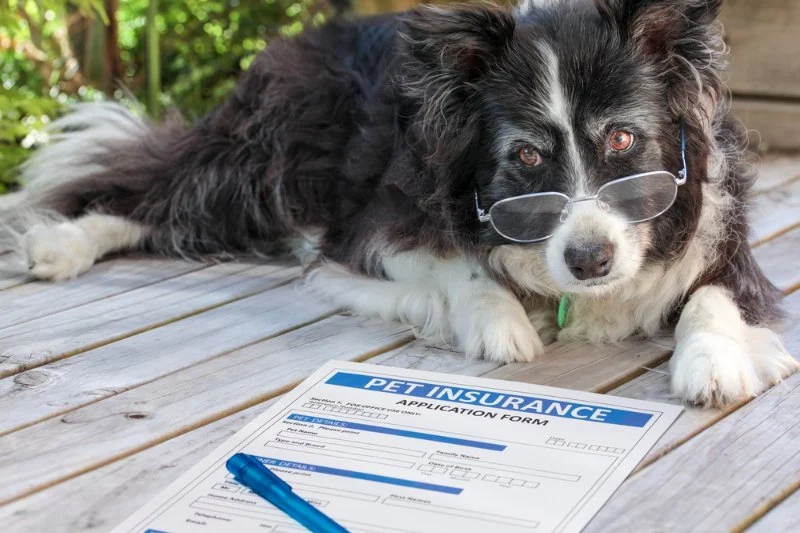
- What Is Pet Insurance?
- Types of Pet Insurance Coverage
- Commonly Covered Expenses in Pet Insurance
- How to Choose the Right Pet Insurance Plan
- Real-Life Example: A Pet Owner’s Experience with Insurance
What Is Pet Insurance?
Pet insurance is a type of health insurance specifically designed to help cover the medical costs of your pet. Just like human health insurance, pet insurance allows you to pay a monthly premium in exchange for coverage on various health issues. When your pet needs veterinary care, you can submit claims to your insurer for reimbursement, depending on the policy details. Pet insurance can help you manage unexpected veterinary costs, ensuring that you don't have to make tough financial decisions during emergencies.
For pet owners, understanding pet insurance is crucial because it helps in making informed decisions about your pet's healthcare without worrying about steep costs that come with treating injuries or illnesses. In the following sections, we’ll break down what pet insurance covers and how it works.
Types of Pet Insurance Coverage
Pet insurance policies typically offer several types of coverage options. These include:
- Accident-Only Coverage: This is the most basic type of pet insurance. It covers injuries resulting from accidents, such as broken bones or car accidents, but does not cover illnesses.
- Illness Coverage: This type covers your pet in case they develop illnesses, from mild infections to serious conditions like cancer.
- Comprehensive Coverage: The most comprehensive pet insurance covers both accidents and illnesses, providing a broad safety net for your pet’s health. It may also cover things like cancer treatment, surgeries, and certain tests.
- Wellness Plans: Some insurers offer optional wellness plans to cover routine care like vaccinations, flea treatments, and annual check-ups.
Commonly Covered Expenses in Pet Insurance
Pet insurance helps cover a wide range of veterinary expenses. Here are the most common types of care that are typically covered:
- Emergency Care: If your pet experiences an emergency, such as a car accident or sudden illness, your insurance may cover the immediate costs of treatment, hospitalization, and sometimes surgery.
- Surgery: Major surgeries can be expensive, but with pet insurance, you may be able to get some or all of the costs covered depending on the policy.
- Prescription Medications: If your pet requires medications to treat an illness or condition, pet insurance can help cover the cost of prescriptions.
- Diagnostic Testing: Tests like X-rays, MRIs, or blood work that are required to diagnose your pet’s condition are often covered by pet insurance.
- Chronic Conditions: Many pet insurance plans will cover long-term or chronic conditions such as arthritis, diabetes, or allergies, as long as they are not pre-existing conditions.
How to Choose the Right Pet Insurance Plan
Choosing the right pet insurance policy can feel overwhelming with so many options available. To make the best decision for your pet, follow these steps:
- Evaluate Your Pet’s Needs: Consider your pet’s age, breed, and health history. Older pets or pets with pre-existing conditions may have more limited coverage options.
- Compare Plans: Not all pet insurance plans are the same. Compare coverage options, premiums, deductibles, and reimbursement rates to find the plan that suits your budget and needs.
- Understand the Exclusions: Make sure to read the fine print. Understand what’s not covered by the policy, including pre-existing conditions, certain breed-specific conditions, or elective surgeries.
- Check Reviews: Look for customer reviews and ratings to see how well the company handles claims, customer service, and the speed of reimbursement.
Real-Life Example: A Pet Owner’s Experience with Insurance
Let’s take the example of Sarah, a pet owner from Texas, who recently faced a situation where her dog, Max, required surgery after being diagnosed with hip dysplasia. Sarah had a comprehensive pet insurance plan from Omnia Pet, which covered most of the costs for the surgery, including the follow-up treatment. Although the initial cost was high, Sarah was able to save hundreds of dollars due to the coverage, which made her feel more at ease knowing Max’s health was taken care of without breaking the bank.
Sarah’s experience highlights how having pet insurance can provide peace of mind, knowing that your pet’s health needs are covered during unexpected situations.

Babylon Animal Hospital
LindenhurstSuffolk CountyNew York
350 E Montauk Hwy, Lindenhurst, NY 11757, USA
Conclusion
Understanding pet insurance and what it actually covers is essential for all pet owners. It allows you to make informed decisions about your pet’s healthcare, knowing that unexpected expenses don’t have to be financially burdensome. Whether you’re covering accidents, illnesses, or wellness care, there’s a plan that fits your pet’s needs. To explore more options and find the best pet insurance for your furry friend, visit Omnia Pet today!








 Hollywood Feed4.0 (184 reviews)
Hollywood Feed4.0 (184 reviews) Brew Biscuits5.0 (2 reviews)
Brew Biscuits5.0 (2 reviews) All Friends Animal Hospital4.0 (446 reviews)
All Friends Animal Hospital4.0 (446 reviews) Kittylandkittens LLC0.0 (0 reviews)
Kittylandkittens LLC0.0 (0 reviews) Village Animal Clinic4.0 (212 reviews)
Village Animal Clinic4.0 (212 reviews) Rift Lake Aquatics4.0 (165 reviews)
Rift Lake Aquatics4.0 (165 reviews) Understanding Pet Insurance: What Does It Actually Cover?
Understanding Pet Insurance: What Does It Actually Cover? How to Keep Your Kitten's Eyes Clean and Free of Discharge
How to Keep Your Kitten's Eyes Clean and Free of Discharge The Truth About Heartworm Disease: Prevention is Cheaper Than Cure
The Truth About Heartworm Disease: Prevention is Cheaper Than Cure Why Is My Kitten's Belly Button Showing? | Omnia Pet
Why Is My Kitten's Belly Button Showing? | Omnia Pet Why Does My Cat Bite Me Gently? Love Bites Explained
Why Does My Cat Bite Me Gently? Love Bites Explained How to Stop Your Kitten from Getting into Cabinets
How to Stop Your Kitten from Getting into Cabinets